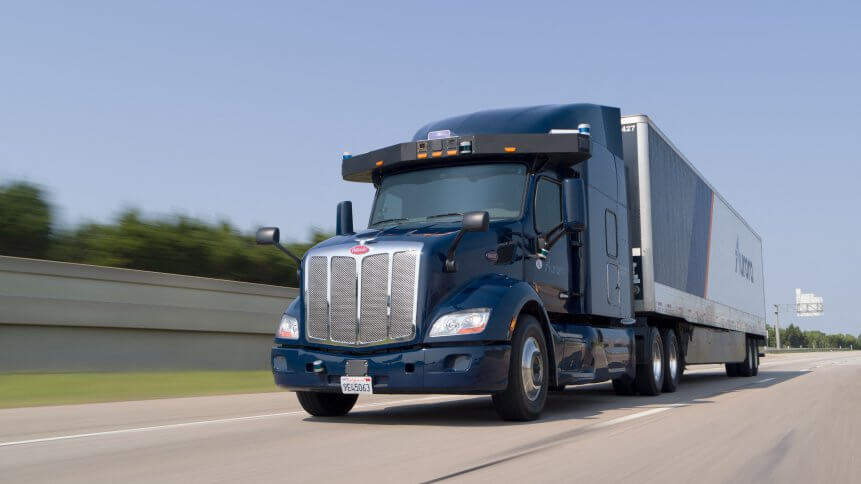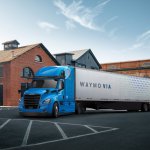Are robot trucks safe for the long-haul on US highways?

- Pioneers of robot trucks have billed them as a safer alternative to human drivers
- The US will need an estimated 80,000 new drivers to end the supply chain crisis
- US Safety advocates and labor unions have convinced lawmakers to disallow the sale of automated trucks or commercial vehicles
A shortage of qualified truck drivers is one of the leading reasons for recent supply chain woes in the US. The massive industry faces an acute labor shortage due to the high turnover rate of truck drivers.
With a growing economy, more goods are being transported than ever before. However, the industry has failed to keep pace with demand and now faces a severe driver shortage.
Drivers needed to advert the supply chain crisis
The US will need an estimated 80,000 new drivers to end the persistent supply chain crisis. This could double to 160,000 by 2030, based on demographic trends and forecast growth in the demand for freight.
Meanwhile, the United Kingdom Road Haulage Association (RHA) survey of its members estimated that there is now a shortage of more than 100,000 qualified drivers in the UK. This shortage has been attributed to several factors, including Brexit, the pandemic, IR35 (anti-avoidance tax legislation), an aging workforce, and insufficient pay.
Robot trucks to alleviate the supply chain problem
This has led to some thinking that autonomous trucks could help alleviate this problem. Shipping companies and software developers are experimenting with self-driving trucks to solve a driver shortage.
Automation could save the freight industry billions of dollars and help it address an expected labor shortage. Although it will be several years before self-driving trucks hit the road on any mass scale, some fleets have already begun testing the technology in pilot programs.

In this undated handout image released by Aurora Technologies Inc., Aurora tests its autonomous trucks, powered by the Aurora Driver, with human vehicle operators on public roads in Texas. (Photo by Aurora Technologies Inc. / AFP)
New technology has allowed these vehicles to drive themselves on highways, and major companies like Otto and Embark are already using them. In theory, robot trucks could operate 24/7 to unclog the backlog quickly and safely at ports to get supply chains back on track.
Having driverless trucks could also cut delivery costs and carbon emissions. While autonomous trucks are expected to provide many benefits, they are also associated with questionable drawbacks.
Questions about the safety of autonomous trucks on the US highways
The push to get driverless trucks on US roadways comes as safety concerns, along with the rapid pace of development, has created tension between regulators and tech companies. Safety advocates and labor unions have convinced lawmakers to disallow the sale of automated trucks or commercial vehicles. Thus, legislation has prevented winning approval every year in the Senate since 2017.
Pioneers of the technology have billed them as a safer alternative to human drivers. Advocates of the technology have said that a driver doesn’t need to be behind the wheel at all times with a driverless truck, allowing for longer stretches between rest breaks.
What’s more, autonomous trucks could make the trip non-stop in 24 hours. Yet, robot trucks still face an uphill battle before reaching the nation’s highways. According to the National Highway Traffic Safety Administration, numbers have shown that 12.6% of all crashes on US roads in 2020 involved a large truck.
This has led safety advocates to say the technology is still relatively unproven and may lead to more fatal crashes. Still, National Highway Traffic Safety Administration data has shown 94% of crashes on US roads are caused by human error.
The US Advocates for Highway and Auto Safety are also skeptical as the autonomous truck technology is still unproven, and have said that these test products should not be on the roads.
Pushing for robot trucks on the road
In the push for driverless trucks on US freeways, vehicle startup Gatik as part of its partnership with Walmart has eliminated the safety operator from behind the wheel of its two self-driving trucks. The California firm addresses safety concerns by avoiding making multiple lane changes, schools, hospitals, fire stations, and moving orders from point A to point B within the delivery window.
Waymo’s trucking division began testing driverless rigs carrying freight with J.B. Hunt Transport while TuSimple Holdings Inc. completed its fully autonomous semi-truck drive on open public roads without a human driver last year.
Self-driving trucks are on the road — but not entirely. There is still a long way to go before autonomous trucks entirely take over drivers, and US regulators are taking their time to ensure that self-driving trucks become as safe as possible before they’re allowed on the road.










